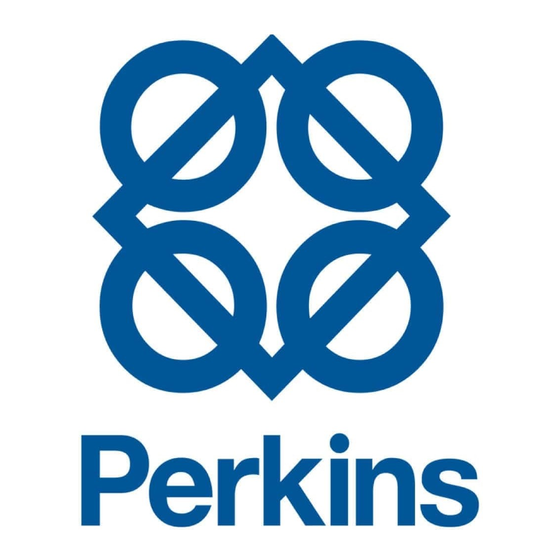Table of Contents
Advertisement
Perkins 6.3544 Series
Models TU, TW and TX
USER'S HANDBOOK
6 cylinder diesel engines for vehicle, industrial and
agricultural use
Publication TPD 1289E, Issue 2.
© Proprietary information of Perkins Engines Company Limited, all rights reserved.
The information is correct at the time of print.
Published in 1994 by Technical Publications,
Perkins Engines Company Limited, Peterborough PE1 5NA England
i
This document has been printed from SPI². Not for Resale
Advertisement
Table of Contents

Summarization of Contents
General information
Introduction
General intro to the 6.3544 Series engines for various applications.
Safety precautions
Crucial safety measures for operating and maintaining the engine.
How to care for your engine
Guidance on engine maintenance and correct operation for longevity.
Engine preservation
Procedures for preserving the engine, especially during storage.
Parts and service
Information on obtaining parts and service from Perkins distributors.
Engine identification
How to identify different engine types within the 6.3544 Series.
Engine data
Technical specifications and data for the 6.3544 Series engines.
POWERPART consumable products
Details on Perkins branded consumable products for engine maintenance.
Engine views
Introduction
General introduction to engine component diagrams.
Location of engine parts (naturally aspirated engines)
Identifies components on naturally aspirated engines (front/left and rear/right views).
Location of engine parts (turbocharged engines)
Identifies components on turbocharged engines (front/left and rear/right views).
Location of engine parts (turbocharged engines with intercooler)
Identifies components on turbocharged engines with intercooler (front/left and rear/right views).
Operation instructions
How to start the engine
Detailed procedures for starting the engine under various conditions.
How to stop the engine
Instructions on safely stopping the engine.
Adjustment of engine speed range
Guidance on engine speed settings and warranty implications.
Running-in
Recommendations for running-in new or overhauled engines.
Turbocharged engines
Specific operation advice for turbocharged engines.
Altitude
How altitude affects engine operation and fuel delivery.
Preventive maintenance
Preventive maintenance periods
Guidelines for maintenance intervals based on operating conditions.
Schedules
Detailed maintenance schedules based on time, distance, and hours.
How to drain the cooling system
Step-by-step guide to draining the engine's cooling system.
How to check the drive belt(s)
Procedures for checking and adjusting drive belt tension.
How to clean the gauze strainer of the fuel lift pump
Instructions for cleaning the fuel lift pump strainer.
Fuel pre-filter
Information on the fuel pre-filter and its maintenance.
How to renew the filter element(s) of the fuel filter
Steps for replacing fuel filter elements.
Atomiser fault
Diagnosing and addressing faults related to engine atomisers.
How to renew an atomiser
Procedure for replacing engine atomisers.
How to eliminate air from the fuel system
Steps to bleed air from the fuel system.
How to renew the lubricating oil
Procedure for changing the engine's lubricating oil.
How to renew the canister of the lubricating oil filter
Steps for replacing the lubricating oil filter canister.
How to clean the engine breather valve
Instructions for cleaning the engine breather valve.
Air cleaner
Maintenance of the wet-type air cleaner.
Air filter
Service and maintenance of the air filter element.
Restriction indicator
Understanding and resetting the air filter restriction indicator.
How to check the valve tip clearances
Procedure for checking and adjusting valve clearances.
Engine fluids
Fuel specification
Recommended fuel quality and specifications for Perkins engines.
Low temperature fuels
Use of special winter fuels for low-temperature operation.
Aviation kerosene fuels
Considerations for using aviation kerosene fuels in engines.
Lubricating oil specification
Recommended lubricating oil grades and viscosity for ambient temperatures.
Coolant specification
Recommendations for coolant quality, antifreeze, and corrosion inhibitors.
Fault diagnosis
Problems and possible causes
Table listing engine problems and their potential causes and checks.











Need help?
Do you have a question about the TU and is the answer not in the manual?
Questions and answers